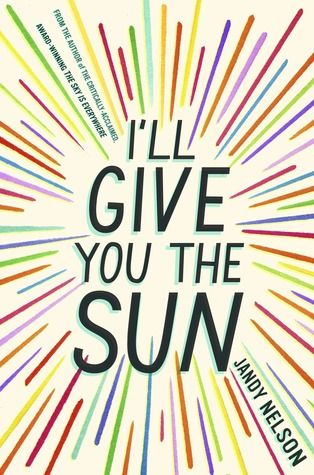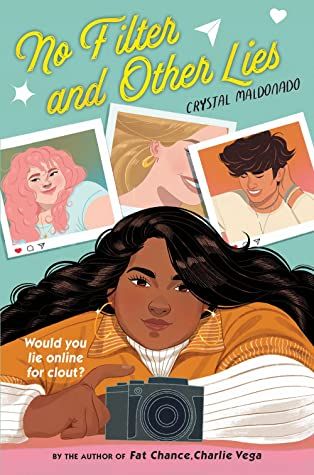
What is Quiet YA?: No Easy Definition
If you’ve hung around in the YA spheres long enough, especially if you’re a contemporary YA fiction reader, chances are you’ve probably heard the term “quiet YA” thrown around in reference to certain books. It’s not a trope or genre, but rather a type of book that seems like it should be pretty straightforward, but upon closer look defies simple definition. These books tend to be (but not always!) contemporary, midlist YA novels that focus on everyday life issues, with smaller but devoted reader followings. That said, there are always exceptions to the definition(s) people assign to quiet YA, and I’ve seen many disagreements unfold about what qualities qualify a book as “quiet” — the content, the story, or even what kind of “splash” the book might make in the wider market. For that last reason, while some readers clamor for more quiet YA books, sometimes writers and publishing professionals shy away from using the term, worried about any potentially negative connotations.
I’ve been reading and writing about YA for nearly two decades (I think I got at least three new gray hairs writing that sentence) and the conclusion I’ve come to is that everyone has a slightly different definition of what quiet YA means to them! Which, admittedly, is not always the most helpful when trying to understand the preoccupation and excitement readers have for these books. The first definition I recall seeing of quiet YA probably emerged around 2012–2014, and it was pretty straightforward: Quiet YA was YA books that don’t have a high-concept plot. I think a desire for these types of books really came as a response to the Twilight and The Hunger Games years. In the late 2000s and early 2010s, trilogy mania and dystopian and SFF novels dominated the market, and contemporary YA novels weren’t nearly as plentiful, nor did they tend to get as much marketing attention. But there was still a desire for them — I distinctly remember attending BEA in 2012 as a blogger and having a Big Five YA publicist ask a roomful of blogger, “What do you want to see more of in YA?” The prevailing answer was, “MORE CONTEMPORARY!”
Because the dramas of high school and friendship and first love seemed to pale in comparison to the teens who were out there saving the world, falling in love with vampires, and toppling totalitarian governments, and because they weren’t getting the mega-movie treatment, I could see how many of the even more exciting and splashy contemporary novels were smacked with the label “quiet.” For better or worse, it’s stuck, even as contemporary and realistic novels swung back in favor and became the Next Big Thing — some touchstones include Rainbow Rowell’s Eleanor & Park and Fangirl, which became bestsellers and were almost wildly popular when they released in 2012 and 2013 respectively, and Jandy Nelson’s I’ll Give You the Sun, which was released in 2014 and won the Printz Award in 2015. These releases weren’t the only contemporary, emotional books releasing during this time period, but they certainly helped shine the buzz spotlight back on moving realistic and contemporary stories about real-life events that don’t impact all of society. But it’s important to remember that books some have defined as “quiet” have always done fairly well in the past 15 or so years, winning some huge awards (Nina LaCour’s We Are Okay, Sara Zarr’s Story of a Girl, and Benjamin Alire Saenz’s Aristotle and Dante Discover the Secrets of the Universe) and finding their way to the screen (Jenny Han’s The Summer I Turned Pretty and To All the Boys trilogies, The Spectacular Now by Tim Tharp, All the Bright Places by Jennifer Niven, and again, Sara Zarr’s Story of a Girl).
However, if you look at some lists from as recently as 2019, you’ll see that some readers view the “quiet” in quiet YA as YA of any genre that deserves more hype, so the quiet part refers to how loud the book is in the broader landscape of YA. A popular Quiet YA Tumblr even has the tagline, “The YA you’ve never heard of.” I find this definition to be too slippery to be satisfying to me — first off, hype is largely about perception. Second, hype (or perception of hype) says very little about a book’s success long-term, much less its sales record (some books move very few copies in the trade market but are fantastic sellers in schools and libraries). Third, some authors and publishing professionals bristle if you refer to their book as quiet — warranted or not, the term can sometimes feel like a backhanded compliment. And finally, under the radar or under-hyped books can have extremely high-concept qualities, so the definitions begin to break down and clash for me.
I asked a variety of authors and readers and fellow Rioters what some of their favorite “quiet” YA books are, and I was really surprised by how many of them threw titles (even contemporary titles) out that didn’t feel quiet to me at all. And that got me thinking about how as contemporary YA has gotten more popular again, the need for these books to be “high concept” in their own way has made them, at least in my mind, the opposite of quiet. Some examples include a YA spin on Mamma Mia! about a teen girl trying to discover the identity of her mom and who has narrowed it down to three candidates in When You Get the Chance by Emma Lord, a teen girl who has an alternate personality online who is older, cooler, and an influencer in No Filter and Other Lies by Crystal Maldonado, and a rich socialite with a double life pulling midnight heists with a team of drag queens in Death Prefers Blondes by Caleb Roehrig. Are these quiet? I don’t think so, but it it depends on who you ask.
While trying to pin down an easy definition of quiet YA, I found a great tweet thread from YA author, agent, and former Rioter Eric Smith, who says, “For me, ‘quiet’ YA books are more about those intimate, personal stakes. Sometimes they are romance or friendship books…I use quiet loosely though, because stakes that some consider soft, I consider huge. Teens sure do.” And I couldn’t agree more — whether or not a book is considered quiet will probably largely depend on reader perception and vibes of the book, but in my mind, books that tend to focus on the emotional interior lives of characters over sweeping plots and big external events can be called “quiet.” Unfortunately, that means some of these books don’t get nearly the amount of attention they deserve, although some go on to be quite successful. The good news either way? Most teens care deeply about these quieter moments and want to see examples of them in fiction because they’re in the midst of navigating these moments and experiences for themselves. And that’s why these so-called quiet books will always be important, and why I think they’ll always find an audience, even if they don’t become the next worldwide bestsellers.


















